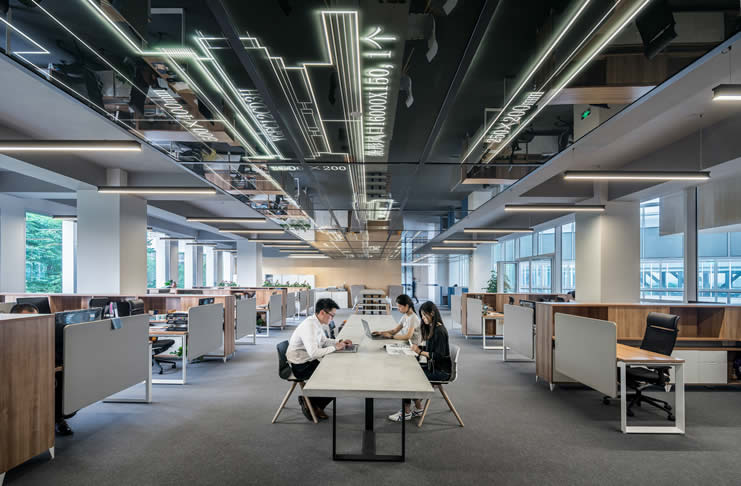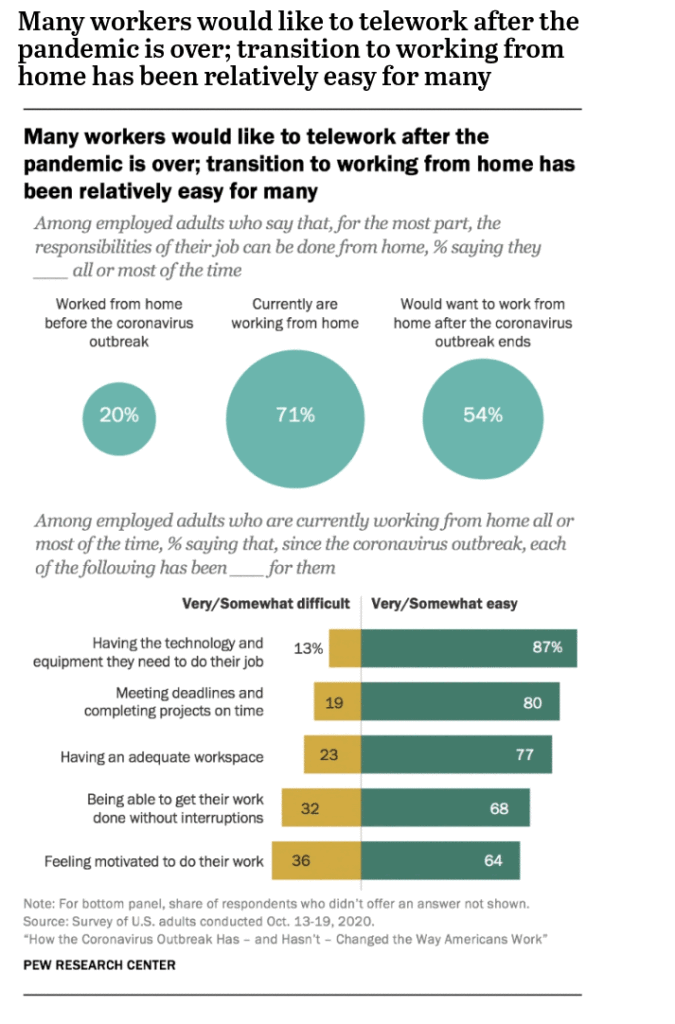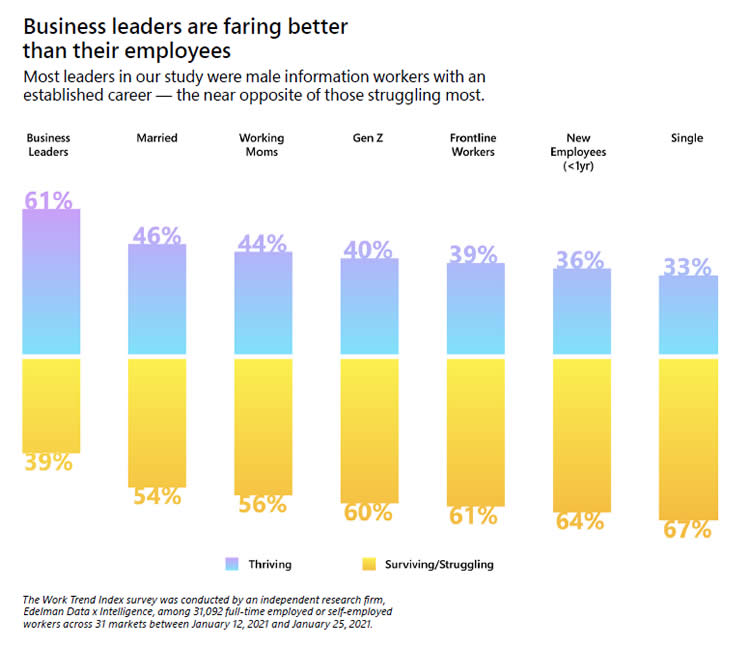The future of work is here, and it’s predominantly about hybrid work, impacting the physical workplace environment. That’s at least the consensus for numerous types of jobs.
Several messages and forecasts keep getting repeated since the pandemic started and evolved as organizations constantly looked at the impact of the health crisis – and how to deal with it.

On a level of technology, we heard – and saw – how the adoption of digital tools and pace of digital transformation accelerated, to give one example. Yet, most coverage and analysis undoubtedly went to remote work, hybrid work, and these days to the physical workplace and new work models to 1) enable a hybrid workforce and 2) be ready for complete remoteness in case it once becomes necessary (again).
“Remote everything,” along with flexibility or hyper-agility, as some say, became a theme that drives changes in many areas, work included. However, there’s also an increased focus on making ‘remote’ possible across other domains.
66% of business decision makers are considering redesigning physical spaces to better accommodate hybrid work environments (Microsoft 2021 Work Trend Index)
Remote maintenance, remote operations; ‘remote’ is a term for years to come, perhaps not in everything but in many domains. The aspect of increasing remoteness across operations existed before the pandemic started. In the end, it’s what cloud, decentralized computing models (edge computing), ongoing automation, IoT, and the autonomous systems of Industry 4.0 often enable.
Yet, remote work or telework, as we saw it happening during lockdowns and other situations, was – and is – something else. It’s human work with many digital tools and quite some challenges. Unlike machines, people have a personality, capacities (also to learn), needs, preferences, and an individual/social context.
Bumping into people in the office and grabbing lunch together may seem unrelated to the success of the organization, but they’re actually important moments where people get to know one another and build social capital (Dr. Nancy Baym)
Remote work and hybrid work
Some adore being in the physical workplace environment or even need it; the colleagues, the habit, the inspiration – the list is endless. Others already liked a more hybrid work or ‘flexible work’ model. And some started appreciating it more once the struggles coming with the need to switch fast to remote were over. Last but not least: for many, the pandemic resulted in their first experience with teleworking.
Now that we have all experienced how fast things can go wrong and many of us are very aware of risks, business and cyber resilience have become driving forces in organizations. We revisit many aspects of our businesses (supply chains, work models, the capacities we lack) and want to be – at least – ready for a ‘remote everything’ scenario.
Many organizations are considering what ‘hybrid’ means for them, how they might meet this new employee demand, and what will need to be in place in order for these new ways of working to be effective (CIPD, July 2021)
Yet, regarding work (and education and other domains where we want to interact with others), most only want ‘remote’ to an extent, with differences per job type, sector, region, and more. Internationally active companies will certainly know how attitudes and preferences differ. But at least one thing is universally valid: business leaders have to pay closer attention to ample factors and their – future – workers than ever.
Many remote workers wanted to be in the office again, see their colleagues, have their coffee corner moments. And many bosses wanted their employees back and see those abandoned offices filled. The degree to which workers and execs want(ed) this is highly individual and contextual. You find data from research further in this article.
Some missed physical interactions since day one, and others discovered that remote or hybrid work did have their benefits. Some business owners saw more disadvantages than others. And then there are, of course, the personalities and – evolving – experiences. Some found (and find) it hard to distinguish between work and private life at home and had to learn how to manage it all. Some fear they’ll never be able to do so and/or being softly forced to work more than they used to. Others discovered an ideal way to improve the work and life balance. You name it.
Most corporate entities, regardless of the industry they are in, look to enhance the physical workplace experience with modern, hip and smart workspaces (Hugh Lindsay, interview 2019)
What is hybrid work and how does it impact the workplace environment?
To cut a long story short: hybrid work for most became the ideal solution. At least: that’s what the data says and what we know today as ample organizations prepared or prepare the physical workplace for hybrid work, a.k.a. hybrid workplace.
Sure, it sounds simple: a mix of remote and work in the office or offices. However, aside from all practical aspects, it isn’t evident at all.

When we talk about hybrid work, we really mean ‘managed’ and coordinated hybrid work that requires quite some like-mindedness and coordination. Today, some organizations effectively look for workers capable of doing all that and more (and let others go). In case of doubt: hybrid work definitely isn’t an eternal right or the same as working as we feel on any given day.
Hybrid work today is very much a promise and a necessity, with workers and management often already having different opinions on the details (e.g., how many days at home). In many countries people look at what execs will do since they define what work will become and what the office or workplace will be.
By 2022, 90 percent of G2000 will revisit their commercial real estate footprint post-COVID, as many plan augmented workspaces yet do not address the connectivity needs to support a hybrid work model (IDC FutureScape Worldwide Future of Connectedness)
Some things will remain, but some will change again. Perhaps you have seen what the change of management can have as a consequence on organizations, for example, especially when the business goes bad and priorities all of the sudden shift.
For those who could or had to work at home and were invited to return to the physical workplace environment, the question quickly became if it was safe to do so and even if they really wanted – and how. Moreover, shifting to a hybrid work model and, at least as important, being ready for another potential forced switch to remoteness also impacts the physical workplace.
Organizations also needed to rethink what to do with all that commercial real estate. How many offices (and other facilities) have been as good as empty for a long time? Does the central office model work?
Last but not least, quite some people were very well aware of the mental impact of the pandemic and of working at home and then back at the office or in a hybrid work mode. One shouldn’t underestimate the role of the physical environment on health (a topic in building management) and workers do need support now.
Enter all the evolutions we see happening with the physical workplace environment. Here, of course, change was already happening too, among others with the transition towards smart offices and commercial real estate, the impact of a new generation entering the workforce, debates on the health of buildings, modern physical workplace in the war for talent, you name it.

Yet, again, with the pandemic, some challenges became more urgent, and new concerns arose.
The shift to hybrid working models and changing workplaces: a matter of context
How substantial is that hybrid work evolution? What do employers and workers think? How does hybrid work impact the changes in the physical workplace environment? These are just some questions organizations across the globe have been dealing with.
The truth is what the consultant tends to say: “it depends.” And it does. The job, the sector, the people, the vision for the future, the ease or difficulty in attracting/retaining workers, the culture, the list is endless.
Despite the willingness to continue to work from home on a regular basis post-pandemic, employees still retain a strong affinity for the office. Research suggests the office provides a sense of community and belonging, where remote work has led to gaps in collaboration, leadership and managerial competencies. (JLL, March 2021)
It’s clear that tech companies with a somewhat ‘cool’ culture will move to hybrid work and physical workplaces with services that appeal to the workers they seek. It’s also clear that there is a marketing aspect to having a modern and flexible physical workplace. Smart building investments do well since many years with workspaces, smart offices, etc. on the radar of many companies and developers – and for many reasons. Same for newer building automation and building management applications we talk about more now with the evolving physical workplace: space management, hygiene management, smart facility management services, you name it.
Since quite early in the pandemic, dozens, if not hundreds of organizations with different backgrounds across the globe gauged worker sentiment, the impact of remote work, the shifting preferences for hybrid work (among most), the consequences for the physical workplace, digital HR strategies, et cetera.
Numbers and findings evolved and will continue to do so, depending on what awaits us next. If we do return to some state of stability, workers’ minds can change faster than one assumes.
Comparing all the findings of the research is risky for all the obvious reasons. And then there is culture, not (just) on an organizational level but most of all on a country/region level. Because that’s something we all saw: quite significant differences regarding views on remote work and work overall. As mentioned in an earlier article, in a country like Italy, the attitudes regarding distance working changed overnight. The debates and discussions between workers and employers regarding hybrid work seem to play more in countries and regions with no robust tradition regarding social security and workers’ rights.
If you want more data on remote work during the pandemic and the expectations concerning hybrid work, this article has some figures and sources (McKinsey, Gartner).
Hybrid working models and the workplace environment: a spectrum and potential power struggle
While everyone talks about hybrid work (or flexible work if you prefer), there isn’t a formal definition, and there isn’t a universal blueprint for a hybrid work model.
Each organization is different, as is each job, company culture, and so on. In quite some – larger – organizations, there are debates on what exactly the future will bring. For many, it’s a confusing and stressful situation, and even if all is ‘normal’ again, challenges will pop up. Hybrid work can combine the best but also the worst of two worlds with unexpected ‘surprises.’
There is also no definition of what a hybrid workplace (the physical workplace for a hybrid workforce) means and, more importantly, what exactly it should offer. It’s all a matter of context and interpretation. And it’s certainly a matter of corporate strategy, HR strategy, and more.
Like many of you and many consultancies, analyst firms, think tanks, etc., we followed the debates and evolutions and now and then had a chat with friends or partners on other continents.
By 2023, 75 percent of the G2000 commits to providing technical parity to the workforce that is hybrid by design rather than by circumstance, enabling them to work together separately and in real-time (IDC FutureScape Worldwide Future of Work Predictions)
Quite early on, it became clear that there was going to be somewhat of a power struggle concerning the return to the physical workplace. Obviously, not all stakeholders have the same priorities, and the impact of the pandemic was profound.
We shouldn’t forget that the longer it lasted, the more polarization increased across the globe. The tensions that already existed increased with fierce debates on the pandemic and government measures to deal with it. Add the impact on mental health, and you know that making sure a hybrid work model or any other model you pick and the physical workplace deserve the attention they get, at least if you want it to succeed. Strangely enough, the anger and polarization that went hand in hand with numerous other debates (ethics, climate change, capitalism, globalism, inequality, you name it) are rarely mentioned these days, even if the wounds are there.
Some people had and have a really rough time. An additional risk is that this seems to be less the case for business leaders compared who fared better than their employees according to Microsoft’s ‘2021 Work Trend Index’, unveiled end of March 2021.
Microsoft that makes a case for flexible, hybrid work and gathered quite some advice on the topic and the evolution of the workplace environment, was clear in the report. “Leaders are out of touch with employees and need a wake-up call.” You don’t hear it every day. Nevertheless, the graphic below won’t come as a big surprise, nor will the fact that, per the report, workers feel the disconnect.

Of course, it is something one could see coming. Again: we are all different and form our opinions depending on our background and, let’s face it, personal and professional interests and situations.
It became rapidly apparent that getting people back to the office was a priority for many business owners and leaders and that not all hybrid working models would look the same, and we were heading towards a spectrum of variations on a case-by-case basis. According to David Armano every indicator showed it would become a showdown between top-down senior leadership pushing for a return to work and employees pushing for flexibility, especially in legacy companies with a sprawling campus.
When conducting an interview on a new smart office for a commercial real-estate giant in Asia (later more), the people behind the project stated that the priority of employers in the region was also to get people back in the office. It was one of the main reasons why they invested in workplace technologies, to begin with. This was quite early in the pandemic (after the first wave that ended faster in Asia).
After these discussions, more followed, and the reports that came out on the evolution of work and the workplace evolved the longer it lasted, and the more people realized this wouldn’t be over fast. But the differences in views remained, and doubts remain in many countries.
Over the past year, no area has undergone more rapid transformation than the way we work. Employee expectations are changing, and we will need to define productivity much more broadly — inclusive of collaboration, learning, and wellbeing to drive career advancement for every worker, including frontline and knowledge workers, as well as for new graduates and those who are in the workforce today. All this needs to be done with flexibility in when, where, and how people work. (Satya Nadella, CEO Microsoft)
Ask ten people what hybrid work means for them and what purposes the physical workplace should serve, and you’ll get many answers. And the answers will indeed depend on whom you ask, from workers and business leaders to tech companies selling remote work solutions, those selling physical workplace solutions, real estate developers, building owners, you name it.
Top image: Shutterstock, second image: Photo by LYCS Architecture on Unsplash.

